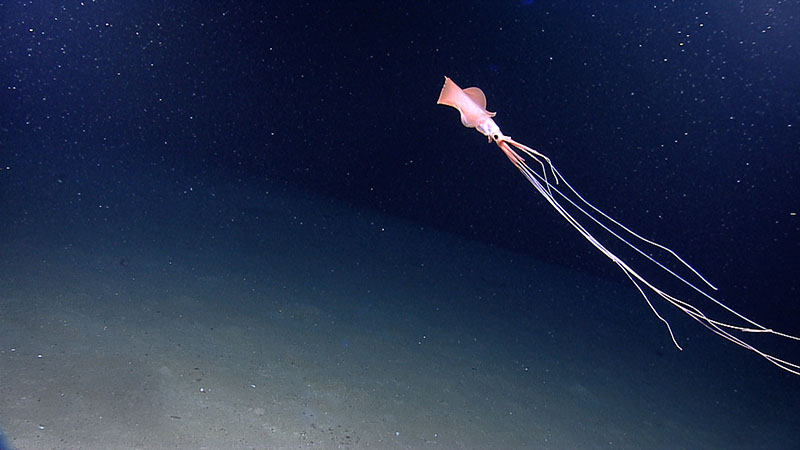Windows to the Deep 2021: Southeast U.S. ROV and Mapping
October 26 - November 15, 2021
Bigfin Squid
It’s only been about 20 years since the bigfin squid family was officially described by scientists. One of those scientists was Mike Vecchione from NOAA Fisheries National Systematics Laboratory and the Smithsonian’s National Museum of Natural History. Sightings like this one often result in a call for the “squid phone.” While there’s no physical squid phone, it’s code for “get Mike.” Luckily, Mike was watching the dive from shore and was quick to call in to share his knowledge about the remarkable creature.
Bigfin squid are widely distributed throughout the world's deep ocean, and they can live deeper than any other known squid. While the squid seen in this video was at 2,385 meters (1.5 miles), the current depth record for a bigfin squid is 4,735 meters (3 miles).
Large fins and long appendages (eight arms and two tentacles) with elbow-like bends give the bigfin squid its distinctive appearance. These squid can exceed 6 meters (19.7 feet) in length. However, that’s mostly arms and tentacles. The largest known bigfin squid was 6.4 meters (21 feet) long. It’s arms and tentacles were 6.1 meters (20 feet) long. That’s 20 times the length of its body!

How exactly bigfin squid use their arms and tentacles is unknown. But, these appendages have microscopic suckers on them, and scientists think it’s likely that squid use them to trap prey that bump into them as they hang down in the water below their body or drag along the seafloor.
Currently, scientists have officially described three species of bigfin squid, but there may be more. With each sighting, we learn more about these elusive wondrous animals, but there’s so much to learn. As access to the deep ocean continues to increase, more opportunities will undoubtedly arise to catch a glimpse of a bigfin squid, and learn more about their biology, behavior, and more.
Published November 12, 2021
Contributed by: Christa Rabenold, NOAA Ocean Exploration